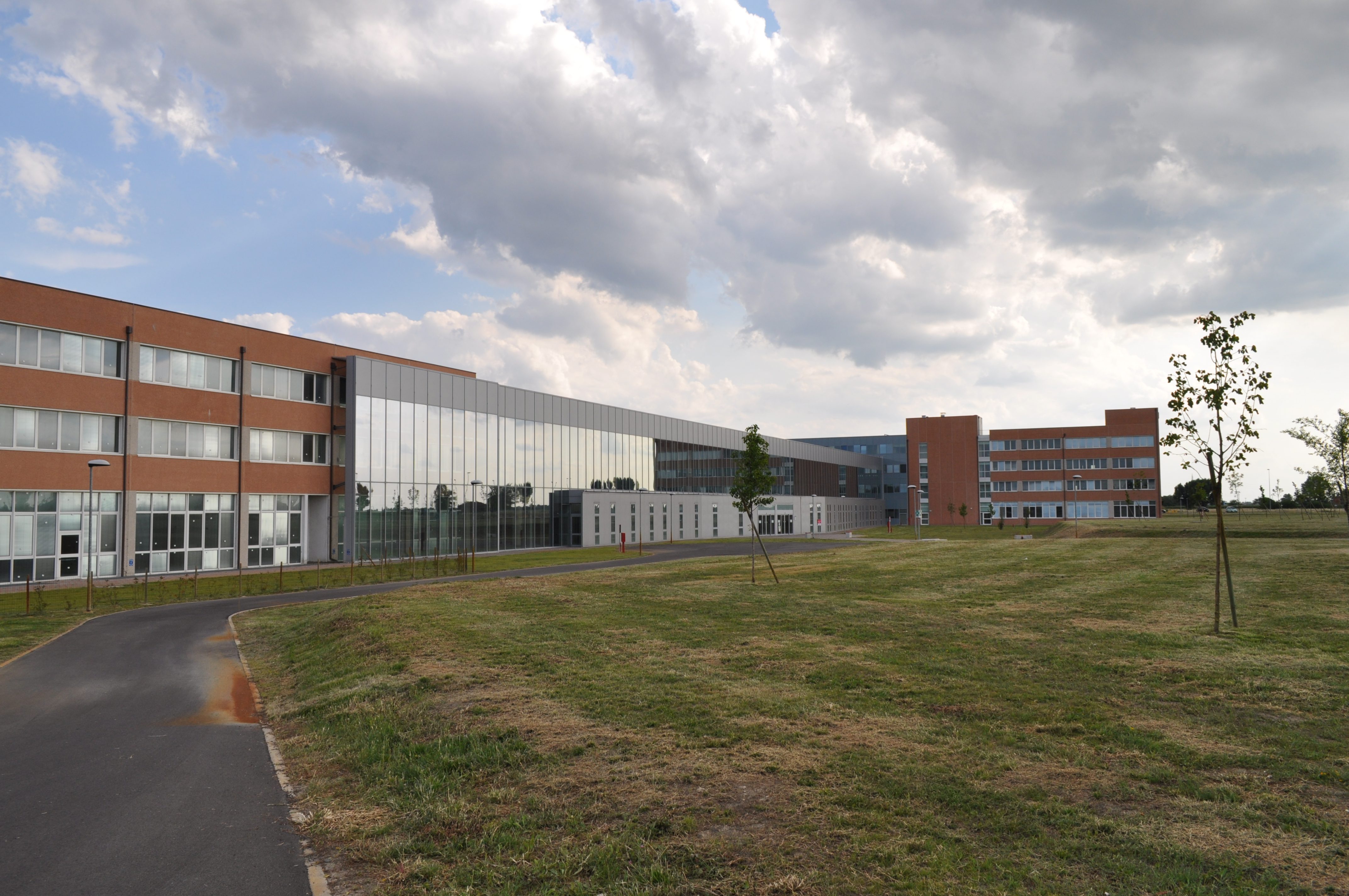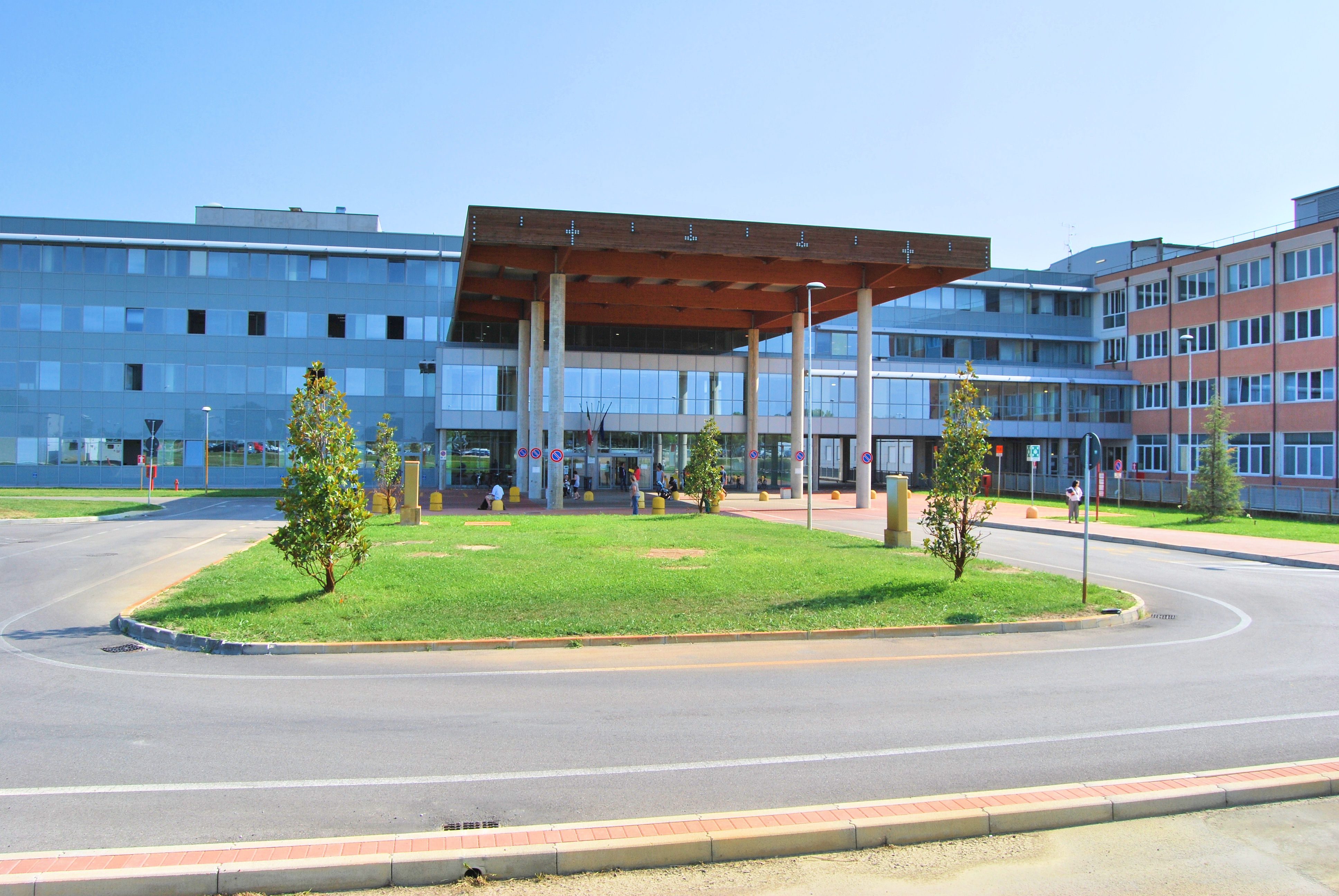Sara Zanella
Cona, Italy
 |
| Sant’Anna church: first site of the hospital |
When the Marquis Nicolò III of Este and his son Leonello were ruling Ferrara at the beginning of the fifteenth century, about twenty different confraternities of monks and friars and lay associations, had the monopoly over the citizens’ health care. In hope of future economic benefits and improved healthcare, Nicolò III of Este, his son, and Bishop Giovanni Tavelli da Tossignano asked and were granted the permission of Pope Eugenio IV to construct a unique hospital for Ferrara.
The original plan was to merge all the existing small hospitals into a new, unique institution. This was difficult to achieve because the confraternities of friars and monks were protected by local politicians against whom not even the Pope had enough power. Finally the project was approved and the Regio Spedale of Santa Maria Nuova in Florence was taken as a model. Finding the right location for this hospital was a top priority; the distance to the city center and to sources of infection needed to allow for future enlargement and to prevent contagion.
 |
| The new Arcispedale Sant’Anna in Cona |
To fulfill these requirements, the Bishop chose a small monastery, built in 1304, and dedicated to Saint Anna (from whom the name of the hospital derives). He expelled a congregation of Armenian friars occupying the monastery, abolished their order, and in 1444 started the work. One year later the hospital was ready to open.
During the fifteenth and the sixteenth centuries, Ferrara became one of the most important centers of the Italian Renaissance. Its university, founded in 1391 by Marquis Alberto V of Este, recorded the presence of illustrious intellectuals such as Nicholas Copernicus, Paracelsus, Niccolò Leoniceno, and Gabriele Falloppio (the anatomist who described and named the uterine tubes, oculomotor muscles and ear structures such as the chorda tympani, cochlea and vestibule). Philosopher Pico della Mirandola spent part of his life in Ferrara and Ludovico Ariosto published his poem “Orlando Furioso” there in April 1516, exactly 500 years ago. The jail of the Sant’Anna hospital is still famous for having hosted for seven years Torquato Tasso, the poet who wrote the “Gerusalemme Liberata” and who was considered to be insane.
A stimulating cultural atmosphere was created by the presence of great artists such as Pisanello, Iacopo Bellini, Leon Battista Alberti and Andrea Mantegna. Between 1570 and 1577 a series of earthquakes hit the city and destroyed Sant’Anna church and probably part of the hospital that needed reconstruction.
 |
| The main entrance of the new Arcispedale Sant’Anna in Cona |
Several centuries passed during which the hospital increased in size and fame. In 1808 it could accommodate 248 patients. Typically ten percent of the patients had mental illnesses, the treatment of which represented a great source of income for the hospital. By 1818 the hospital had become so famous, attracting patients from near and far, that its name was changed to “Arcispedale Sant’Anna.” However, after the city’s expansion by the architect Biagio Rossetti in 1451, the hospital became enclosed between houses and buildings so that no further enlargement was possible. By the beginning of the twentieth century, it could not fulfill the needs of an increasing population nor meet the new scientific standards, and it was decided to build a new hospital.
King Emanuel III laid the building’s foundation stone in June 1910, but the beginning of World War I interrupted the works for seventeen years and only in April 1927 the hospital, which at this time could already host 600 patients, was opened. Further construction was slow and incomplete and in 1988 it was proposed to build a new hospital addition near the village of Cona, a marshy land 10 kilometers from the city center.
This time it was Pope John Paul II who laid the first stone and soon the original plan was changed to that of a “big Cona.” Again construction took several years, and only in 2012 after the earthquake that shook Ferrara and its people, all patients were moved to the new building. Today the Arcispedale Sant’Anna in Cona has been in activity for four years.
Although the hospital is a little far from the city and its corridors are a labyrinth for the patients, it is a comfortable, clean and modern space. Once the bicycle path connecting the city to the hospital is complete, students and hospital workers will be better able to keep up Ferrara’s fame as “the city of bicycles.”
The needs of Ferrara have changed with time and the hospital has tried to keep the pace.
During past centuries many satellite hospitals have opened and closed and modified their function, often with great difficulty, repeating the history of the Arcispedale Sant’Anna.
Only the winter fog that wraps the city and the hospital in its white blanket remains unchanged.
References:
- Nielsen A. L’Ospedale S. Anna in sei secoli di storia: L’evoluzione dell’assistenza ospedaliera ferrarese dal XV secolo ai giorni nostri. TLA Editrice, Ferrara, 2012.
SARA ZANELLA, born in Ferrara in 1987, graduated in Dentistry in 2011 and in Medicine in 2015. During her University years she spent time in Spain, at the New York University, USA, in Indonesia, in Vietnam and at the University of Heidelberg, Germany. She is at present a research fellow in Pediatrics at the University of Ferrara.
Spring 2016 | Sections | Hospitals of Note

Leave a Reply